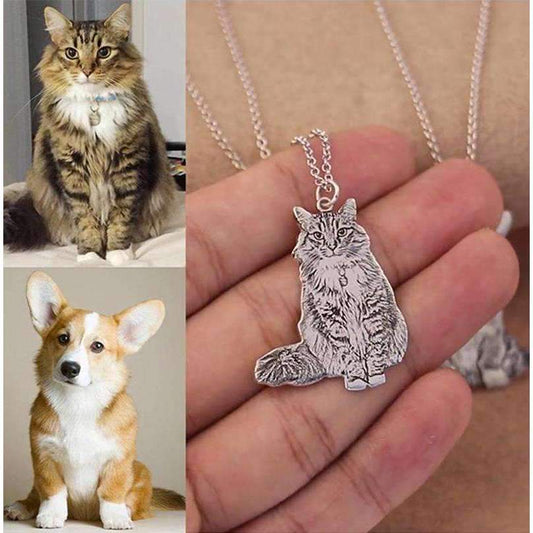Managing multiple cats in a small space is a challenge that requires strategic planning and a deep understanding of feline behavior. This article will explore various techniques to create a peaceful and stimulating environment for your cats, ensuring their needs are met even within limited quarters. From arranging individual spaces to introducing new cats and maintaining litter box hygiene, we will provide actionable tips to help cat owners navigate the complexities of a multi-cat household in a small apartment.
Key Takeaways
- Designating individual spaces and maintaining cleanliness are crucial for harmony in a multi-cat home.
- Gradual introduction, scent swapping, and supervised interactions can ease new cats into small living spaces.
- The N+1 rule for litter boxes and strategic placement are essential to prevent territorial stress in confined areas.
- Enrichment through rotating toys and creating vertical spaces can greatly improve cats' quality of life in small apartments.
- Catering to each cat's needs for exercise, privacy, and individual attention is vital for their well-being and stress reduction.
Creating a Harmonious Multi-Cat Environment

Designating Individual Spaces
In a small living space, creating individual areas for each cat is vital for their emotional well-being. These designated spaces act as personal retreats where cats can relax and feel secure. A compact cat room can be fashioned even in a closet, equipped with a cat bed, scratching post, and toys, providing a sanctuary within limited quarters.
Cats require their own territory to maintain peace and prevent stress. By identifying their needs and tailoring your space accordingly, you can ensure a high quality of life for your feline companions, despite the size constraints of your apartment.
After any negative interactions, it's crucial to have these separate spaces available for a cooldown period. This allows cats to reset emotionally and minimizes the risk of prolonged stress or anxiety. Rewarding positive interactions in these individual areas with treats, praise, and play can further reinforce good behavior and harmony among your pets.
Maintaining Cleanliness and Order
In a small living space with multiple cats, maintaining cleanliness and order is essential to prevent odors and ensure a healthy environment for both you and your feline friends. Regular upkeep of litter boxes is a cornerstone of this process. Here are some key steps to follow:
- Consistent Cleaning: Daily scooping is a must, and for self-cleaning litter boxes, regular inspections are necessary to ensure they function properly.
- Wash and Refresh: Litter boxes should be emptied, washed, and refilled with fresh litter regularly to maintain hygiene.
- Strategic Placement: Keep litter boxes away from high-traffic areas to reduce stress for your cats and minimize odor spread.
Keeping all litter boxes clean is crucial in a multi-cat household. It's not just about odor control; it's about providing a welcoming and stress-free toileting area for your cats.
Remember, a clean space is a harmonious space. By diligently following these steps, you can create a comfortable and odor-free home for your multi-cat family.
Managing Resources to Prevent Competition
In a small space with multiple cats, managing resources effectively is crucial to prevent competition and ensure a peaceful coexistence. Ensuring each cat has access to their own set of resources is a key strategy. This includes separate food and water bowls, as well as multiple litter boxes adhering to the N+1 rule, where 'N' represents the number of cats.
Providing a variety of litter boxes can cater to individual preferences, which may include different sizes or covered options. It's essential to maintain cleanliness across all litter boxes to prevent any territorial disputes.
Positive reinforcement plays a significant role in managing resources. Offering treats and verbal praise during meal times can promote a positive association with shared spaces and resources. Redirecting attention with toys during moments of tension can also help in reinforcing calm behavior. Below is a list of additional tips to manage resources and reduce competition:
- Designate separate feeding areas to avoid food aggression.
- Rotate toys to keep each cat engaged without causing rivalry.
- Implement a consistent cleaning schedule to maintain a clutter-free environment.
By following these guidelines, cat owners can create a harmonious living space that accommodates the needs of multiple feline friends.
Introducing New Cats to a Compact Space

The Art of Gradual Introduction
Introducing new cats to a small living space requires patience and a thoughtful approach. A slow and positive introduction process is crucial for building trust between the cats, reducing anxiety, and preventing potential conflicts. A step-by-step method is the key to fostering a peaceful multi-cat environment.
A careful introduction sets the tone for the cats' future interactions and is essential for their long-term cohabitation.
Here are some steps to ensure a smooth introduction:
- Start by keeping the new cat in a separate room with all the necessary amenities.
- Allow the cats to exchange scents by swapping bedding or toys between them.
- Use a baby gate to let the cats see and sniff each other without full contact.
- Gradually increase the time the cats spend in proximity, monitoring their reactions.
Remember, the goal is to make the first encounters as stress-free as possible, paving the way for a harmonious relationship.
Scent Swapping and Visual Acclimatization
Introducing a new cat to your compact living space requires a delicate touch, especially when it comes to helping your existing pets accept their new roommate. Scent swapping is a cornerstone of this process. Begin by exchanging items like bedding or toys between the cats. This allows them to become accustomed to each other's scent without the stress of a direct encounter.
A 'Scent Swap Party' can set the stage for a more harmonious introduction. It's a simple yet effective method to ease potential tension and foster familiarity. Remember, patience and consistency are key in building trust and bonding with your new feline friend.
When the time comes for visual acclimatization, start with short periods of observation from a safe distance. Gradually increase the time they spend in visual contact, always monitoring their reactions closely.
Positive reinforcement plays a vital role during this stage. Treats and playtime can create good first impressions, helping your cats associate each other with positive experiences. Pay close attention to their body language to gauge their comfort levels and adjust your approach accordingly.
Supervised Interactions and Monitoring
When introducing new cats to a compact space, supervised interactions play a pivotal role in fostering a peaceful cohabitation. Monitoring these interactions allows you to observe their body language and intervene if necessary, using redirection techniques to prevent negative encounters from escalating.
During these sessions, it's essential to reward positive behaviors. Treats, praise, and additional playtime can reinforce good impressions and encourage cats to view each other's company favorably.
Here are some key steps to ensure successful supervised interactions:
- Begin with short, controlled meetings to minimize stress.
- Gradually increase the duration of interactions as the cats become more comfortable.
- Use interactive toys and wand games to encourage simultaneous play and build positive associations.
- Pay close attention to the cats' body language, ready to redirect any tension with toys or alternative activities.
Remember, patience and consistency are crucial in helping your cats adjust to each other and their shared environment.
Litter Box Strategies for Small Apartments

Implementing the N+1 Rule
In the confines of a small apartment, adhering to the N+1 rule is essential for maintaining a peaceful coexistence among your feline friends. This rule suggests having one more litter box than the number of cats you own. For instance, if you're a proud parent of two cats, you should provide three litter boxes.
By following this guideline, you can significantly reduce the chances of territorial disputes and prevent inappropriate elimination behaviors. It's not just about the number of boxes, but also about their strategic placement throughout your living space to ensure privacy and accessibility for each cat.
Remember, cats' peeing habits are influenced by litter box type, location, and cleanliness. It's important to choose the right litter and environment to foster a stress-free experience for your pets. Here's a simple breakdown for a multi-cat household:
- One cat: Two litter boxes
- Two cats: Three litter boxes
- Three cats: Four litter boxes
Each additional cat requires you to add another box to the equation. While it may seem like a lot, especially in a small space, it's a crucial step towards a harmonious home.
Strategic Litter Box Placement
In a small living space, the strategic placement of litter boxes is crucial to prevent territorial disputes and ensure comfort for your feline friends. Avoid placing litter boxes in high-traffic areas to reduce stress and provide a sense of security for your cats. Instead, opt for quiet corners or rooms with less activity. Accessibility is key; make sure that all litter boxes are easily reachable for your cats at any time.
When considering litter box placement, remember that visibility is not the same as accessibility. A litter box should not only be out of the way but also in a location where a cat can use it without feeling exposed or vulnerable.
Here are some additional tips for litter box placement in a small space:
- Quiet Corners: Select spots that offer privacy and tranquility, away from the household bustle.
- Easy Access: Ensure there are no barriers that might prevent a cat from reaching the litter box.
- Space for Every Cat: Follow the N+1 rule, providing a litter box for each cat, plus one extra, and distribute them throughout the living space to avoid competition.
Maintaining Litter Box Hygiene
Keeping the litter box clean is essential for a healthy and odor-free home, especially in a small space. Consistent cleaning is key; even with a self-cleaning unit, regular checks are necessary to ensure proper function and cleanliness. It's crucial to stay on top of scooping, removing waste regularly to prevent odors from settling in.
Here are some steps to maintain your litter box hygiene:
- Regularly empty and wash the litter box, replacing it with fresh litter.
- Inspect self-cleaning units according to the manufacturer's guidelines.
- Replace the litter box if it shows signs of wear or retains odors after cleaning.
Strategic replacement and maintenance of the litter box are vital. Over time, the condition of the box can deteriorate, making it less effective at containing odors and staying fresh. A large plastic storage container with a lid can be an effective homemade solution for those looking to DIY.
Experts recommend removing waste and soiled litter once or twice per day to minimize lingering odors. Additionally, the litter should be changed completely every month, with the box washed using a mild detergent. Always verify with your specific cat litter brand for any differing replacement frequencies.
Enrichment and Play in Limited Quarters

Rotating Toys to Maintain Engagement
To keep your cats mentally stimulated and physically active, it's important to rotate their toys to maintain engagement. Cats can quickly become bored with the same old toys, so introducing new challenges and favorites on a rotating basis can encourage play and prevent boredom.
- Monday: Feather wand
- Tuesday: Laser pointer
- Wednesday: Ball track
- Thursday: Puzzle feeder
- Friday: Catnip mice
- Saturday: Interactive electronic toy
- Sunday: Rest day with favorite toy
By setting a weekly rotation schedule, you ensure that each day brings a new adventure for your cats, keeping their environment fresh and exciting. This strategy not only enriches their lives but also helps to mitigate potential conflicts by providing a structured outlet for their energy.
Remember, the goal is to cater to each cat's preferences and play style. While one may enjoy chasing a laser pointer, another might prefer the tactile sensation of a catnip mouse. Observing your cats' reactions to different toys will help you tailor the rotation to their individual needs, ensuring that each cat remains engaged and content in the shared space.
Establishing Playtime and Quiet Time Routines
In a small space, managing multiple cats requires a delicate balance between activity and rest. Establishing a consistent routine with designated playtime and quiet time is crucial for the well-being of your feline friends. During playtime, engage your cats with interactive toys and wand games, which not only provide essential exercise but also foster positive interactions among them.
Quiet time is equally important. It allows each cat to find their own safe space, away from the hustle and bustle, to relax and recharge. This downtime is essential for preventing overstimulation and reducing the risk of stress-related behaviors.
Rewarding your cats for peaceful coexistence and shared play with treats and praise can reinforce positive behavior. Additionally, using redirection techniques with toys during moments of tension can help maintain a harmonious atmosphere. Remember, cats need social interaction, playtime, and a safe space in the home to maintain their health and well-being. Avoid forcing confrontations and respect their boundaries for a harmonious relationship.
Creating Vertical Spaces for Exploration
In the quest to create a stimulating environment for your feline companions, utilizing vertical space is key. Cats naturally seek high ground for safety and observation, making vertical exploration an essential aspect of their well-being, especially in smaller living spaces.
- Wall-mounted shelves and cat trees can transform your walls into a dynamic playground.
- By providing various levels, you encourage natural climbing and perching behaviors.
- Strategic placement of these elements can connect different areas, offering a seamless adventure.
Cats' instinctual love for heights can be satisfied with creative vertical arrangements, turning a cramped space into a thrilling exploration zone for your pets.
Remember, while introducing vertical elements, it's important to ensure stability and safety. Regularly inspect installations for any signs of wear or damage to prevent accidents. As highlighted by CatsMode, wall-mounted shelves are not only excellent to save horizontal space but also keep your kitty entertained and content in a small apartment setting.
Understanding and Catering to Feline Needs

Recognizing Signs of Stress and Overload
Cats are adept at masking discomfort, but certain behaviors can signal that they are experiencing stress. Increased vocalizations are a telltale sign; a cat that is more vocal than usual may be trying to communicate unease. Similarly, changes in body language, such as hissing or growling, are clear indicators of distress. It's essential to be observant and recognize these signs early to maintain a peaceful multi-cat environment.
When multiple cats share a small space, it's crucial to monitor their interactions and provide ample opportunities for retreat. Recognizing and addressing signs of stress promptly can prevent more serious issues from developing.
Cats may also exhibit stress through physical actions. Hiding more frequently or showing a loss of appetite are behaviors that should not be overlooked. If these signs persist, consider consulting an animal behaviorist to help identify the root cause and develop strategies to alleviate the stress. Remember, each cat is an individual with unique needs and thresholds for stress.
- Increased Vocalizations
- Hissing and Growling
- Hiding or Seeking Isolation
- Loss of Appetite
By understanding and responding to these stress signals, you can create a supportive environment that caters to the well-being of all your feline companions.
Providing Adequate Exercise and Privacy
In a small living space, ensuring that your cats have opportunities for adequate exercise is crucial for their physical and mental health. Interactive toys, such as laser pointers and feather wands, can provide vigorous activity even in limited areas. Additionally, consider setting up a routine that includes dedicated playtime to help your cats expend energy and reduce potential conflicts.
Privacy is another essential aspect of a cat's well-being, especially in a multi-cat household. Cats need their own space to retreat and decompress. Incorporating more hiding spots and vertical space, like cat trees or shelves, can offer a safe haven for your feline companions. If you notice signs of stress or anxiety, it's important to provide separate spaces for a cooldown period.
Cats thrive in an environment where they can exercise freely and have access to private areas. By addressing these needs, you can help maintain a balanced and stress-free atmosphere for your cats.
Ensuring Individual Attention and Care
In a multi-cat household, ensuring individual attention and care for each cat is paramount. This not only fosters a deep bond between you and your feline friends but also mitigates feelings of neglect or rivalry. Here are some practical ways to provide this essential care:
- Schedule daily one-on-one time with each cat for play or cuddles.
- Observe each cat's behavior and preferences to tailor interactions.
- Use treats and praise to reinforce positive behavior individually.
Identifying your cat ownership style is crucial for providing tailored care and environment, considering commitment level, preferences, and safety for a healthy and happy feline companion.
If difficulties arise, don't hesitate to seek advice from an animal behaviorist. They can offer specialized guidance to ensure that each cat's needs are met, contributing to a peaceful and contented home atmosphere.
Conclusion
In conclusion, managing multiple cats in a small space is a rewarding challenge that requires a blend of organization, behavioral understanding, and environmental enrichment. By maintaining a clean and clutter-free environment, adhering to the N+1 rule for litter boxes, and providing ample opportunities for play and privacy, you can create a harmonious living space for your feline family. Remember to introduce new cats carefully to minimize conflict and consider their individual needs for a peaceful coexistence. With patience and creativity, your small apartment can be a haven for multiple cats, ensuring their happiness and well-being in a compact living situation.
Frequently Asked Questions
Can I introduce multiple cats in a small apartment?
Yes, you can introduce multiple cats in a small apartment, but it requires careful planning and management to ensure they have enough space and resources to coexist peacefully.
How do I introduce cats in a small apartment to minimize conflict?
Start by creating separate spaces for each cat with their own food, water, litter box, and resting areas. Then, gradually introduce them to each other using scent swapping, gradual visual introductions, and supervised interactions.
Should I get cats of similar age and temperament for a small apartment?
While it's not mandatory, getting cats of similar age and temperament can help reduce potential conflicts and make the introduction process smoother.
How crucial is the N+1 rule for litter boxes in a small apartment?
The N+1 rule, which suggests having one more litter box than the number of cats, is crucial in a small apartment to prevent territorial behavior and ensure each cat has access to a clean litter box.
How can I keep my cats engaged with toys in a limited space?
Regularly rotating their toys and introducing new ones can keep your cats interested and prevent boredom, which is essential for their mental and physical health.
What are the specific needs of cats in small apartments?
Cats in small apartments need opportunities for exercise, privacy, and areas to climb and explore. Tailoring your space to meet these needs can prevent behavioral issues and promote harmony.




